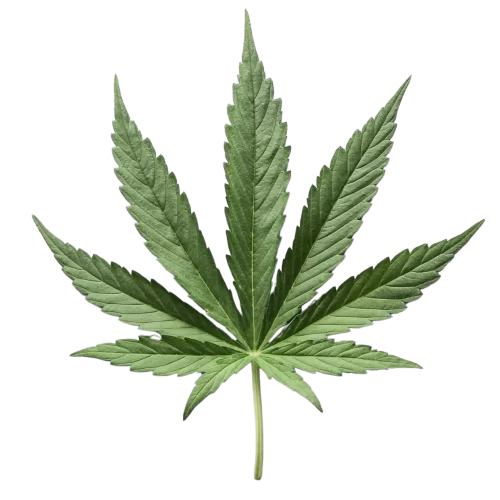The military has a long and storied history when it comes to cannabis, with an interesting back-and-forth relationship for decades. As society has grown, there have been significant changes in how military drug testing is handled.
With the stigma surrounding marijuana rapidly evolving, and the understanding of how it can benefit our military members becoming better known, regulations have finally been shifting in the right direction. However, the military still has a long way to go regarding its use and perception of this plant.
The Military’s History With Substances
In the year 1910, after the Mexican Revolution, Mexican immigrants brought recreational marijuana to the United States in large quantities. A negative stigma around cannabis (pushed by propaganda and the government) was associated with these newcomers, causing Congress to pass the Marijuana Tax Act in 1937 to regulate marijuana better.
However, during World War II, the United States Military turned to hemp to make military gear like marine cordage, parachutes, etc. In doing so, they subtly acknowledged that cannabis does have merits as a plant.
The Vietnam Era
A big cultural shift occurred in the 1960s with the rise of the hippie movement, creating an even more lenient attitude towards marijuana in general in the United States. It also became more accessible than it had ever been before. Later in the 1960s, during the Vietnam War era, there was significant service member use of marijuana and harder drugs like heroin, which soldiers often turned to as a way to escape the horrors of war.
It was the heavy use of weed and other drugs that eventually led President Nixon to direct the military drug urinalysis program in June of 1971.
Two years later, the Department of Defense Amnesty Program had over 16,000 military members confess to their drug abuse problem. It was estimated that 42% of the United States military personnel in Vietnam during this period had used opioids at least once, and half of these personnel reported physical dependency on opioids.
In 1974, random drug testing was established to continue to identify drug users for treatment purposes. However, this random drug testing did not deter drug use among military service members. Illegal drug use by military service members was still between 27% and 38%, depending on the unit.
Late 20th Century Changes
When a military aircraft accident occurred in 1981, with drugs as a main contributing factor, the 15 deaths, 48 injured, and 11 damaged planes totaled $150 million in damages. Marijuana metabolite, along with other substances, was found in the bodies of six of the military members killed in the accident. This likely led to further negative views of cannabis by the military, despite the involvement of other drugs.
This triggered Deputy Secretary of Defense Carlucci to issue a memorandum authorizing punitive action to be taken in the form of court-martials or discharge against military members who tested positive on a drug test. This drug test looked for marijuana along with cocaine, heroin, opiates, amphetamines, barbiturates, methaqualone, and PCP.
Throughout the 1980s, the forensics behind drug testing continued to evolve and become more defined and procedural, which helped keep military members from being discharged unfairly. The types of drugs and detectable levels on this banned substance list also evolved throughout the 1980s.
By 1985, the drug testing cutoff for THC dropped from 75 ng/ML to 20 ng/mL of delta9-tetrahydrocannabinol-9-carboxylic acid. However, the cannabinoids cutoff remained at 100 ng/mL. The percentage of military members using illegal drugs was only 4.8% by 1988.
At the same time, the Military Entrance Processing Station (MEPS) testing began for THC and cocaine. MEPS testing evaluates and determines the military applicant’s physical, mental, and moral readiness to join the U.S. military.
In the 1990s, drugs like ecstasy were added to the banned substance list, but there were no changes regarding how the military tested for cannabis during this decade.
In 2000, the Secretary of Defense made the first positive step forward regarding military marijuana testing. That year, they reduced the reapplication waiting time from 180 days to 45 days. But since that minor adjustment in 2000, there have been no direct changes to the policies regarding marijuana or its place as a banned substance in the military — that is, until recently.
Marijuana and the Military: Present Day
In June 2024, a new section of a major defense bill was passed, marking the most significant step forward for cannabis use within the military since it was originally banned in the 1970s.
This defense bill now prevents military branches from drug testing recruits for marijuana specifically as a condition of enlisting. However, other pro- and anti-cannabis amendments were considered and blocked. Last year, very similar legislation regarding enlistment testing for cannabis was proposed and did not pass.
The approval of this underlying bill means marijuana screening within the military is finally advancing in a more progressive direction. This National Defense Authorization Act was passed with a 217-199 vote.
The official language in the code reads, “The Secretary of the military department concerned may not require an individual to submit to a test for cannabis as a condition of enlistment of such individual as a member, or the commission of such individual as an officer, of an Armed Force.”
Several military branches had already taken steps to loosen restrictions regarding cannabis, such as issuing first-time positive testing waivers for recruits. It also comes as no surprise this bill has finally passed since THC is the most common substance appearing on positive drug tests for active military members.
The language in the report on this bill also discussed pulling information on how many service members were discharged solely due to marijuana in the last ten years. Additionally, another amendment was adopted that would require a briefing for cannabis-related offenses under the Uniform Code of Military Justice due to the rescheduling of cannabis to Schedule III.
A briefing on sentencing outcomes for cannabis-related offenses will be submitted to the House Committee on Armed Services by January 31, 2025. It will include the number of convictions in the last four fiscal years, as well as each convicted personnel’s rank and time in military service.
Final Takeaway
While the U.S. military has evolved both in good and bad ways regarding cannabis, things seem to be taking a significant positive turn in recent months.
With the possible rescheduling of cannabis imminent and legalization spreading rapidly throughout the states, as well as continued research supporting marijuana as a drug with medical benefits, the stigma and negativity that has pervaded cannabis spaces for decades is finally dissipating.
This likely rescheduling could have a strong effect — not only on how the military views and tests for cannabis among its personnel, but also on how it will continue to evolve its policies in favor of cannabis use in the future.
Author, Share & Comments









